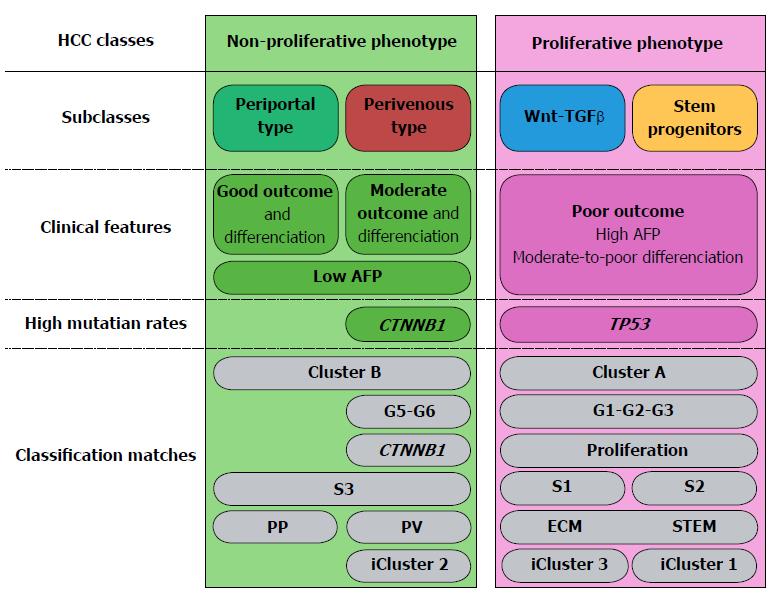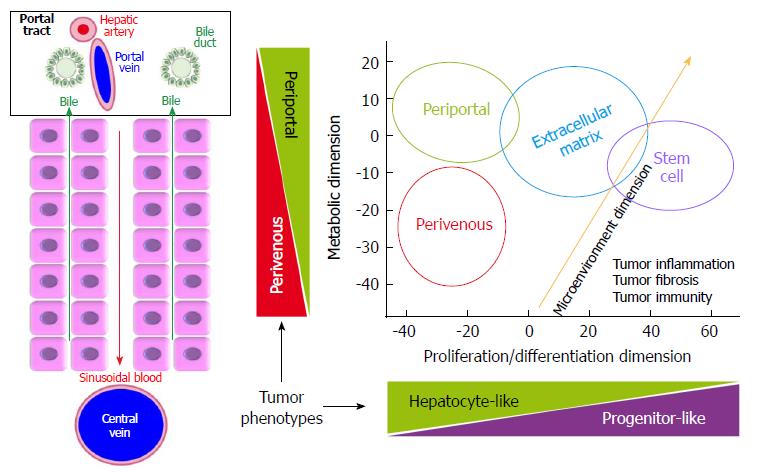Copyright
©The Author(s) 2018.
World J Gastroenterol. Oct 28, 2018; 24(40): 4536-4547
Published online Oct 28, 2018. doi: 10.3748/wjg.v24.i40.4536
Published online Oct 28, 2018. doi: 10.3748/wjg.v24.i40.4536
Figure 1 Toward a unifying molecular classification of human hepatocellular carcinomas.
Two major hepatocellular carcinoma (HCC) classes, non-proliferative and proliferative can be subdivided into four subclasses. Non-proliferative, well-differentiated HCCs comprise two subclasses with mutually exclusive metabolic features and regulatory signaling pathways: Periportal-type (HNF4α-driven) and Perivenous-type (β-catenin-driven). Proliferative, moderately-to-poorly differentiated HCCs comprise two subclasses: Wnt/TGF-β (regulated by interplays between Wnt and TGF-β ligands, leading to expression of extracellular matrix glycoproteins) and Stem/Progenitors (showing features of liver progenitor cells). Major clinical features, gene mutations and matches between the different HCC classifications are indicated. HCC: Hepatocellular carcinoma; TGF-β: Transforming growth factor beta; AFP: Alpha-fetoprotein; CTNNB1: Gene encoding β-catenin; TP53: Gene encoding p53; PP: Periportal; PV: Perivenous; ECM: Extracellular matrix; STEM: Stem/progenitor cells.
Figure 2 The dimensions of hepatocellular carcinoma phenotypic diversity.
In normal liver, the interplay between HNF4A and β-catenin governs the differential distribution of metabolic functions along the portal-to-central vein axis, which is known as liver zonation. The phenotypic spectrum of hepatocellular carcinomas across the increasing proliferation/differentiation ratios is orthogonal to the metabolic dimension, with opposing periportal vs perivenous tumor metabolic phenotypes. The third dimension, the tumor microenvironment, comprises specific features of tumor inflammation, fibrosis and immunity characterizing each hepatocellular carcinoma (HCC) subclass. Adapted from Désert et al[43].
- Citation: Désert R, Nieto N, Musso O. Dimensions of hepatocellular carcinoma phenotypic diversity. World J Gastroenterol 2018; 24(40): 4536-4547
- URL: https://www.wjgnet.com/1007-9327/full/v24/i40/4536.htm
- DOI: https://dx.doi.org/10.3748/wjg.v24.i40.4536














